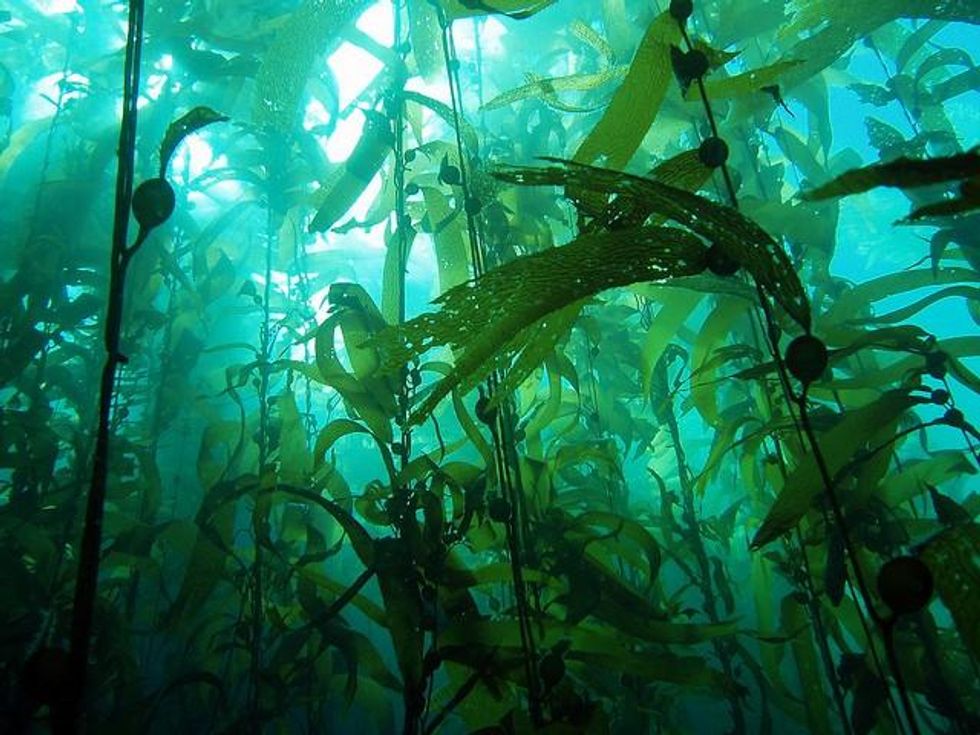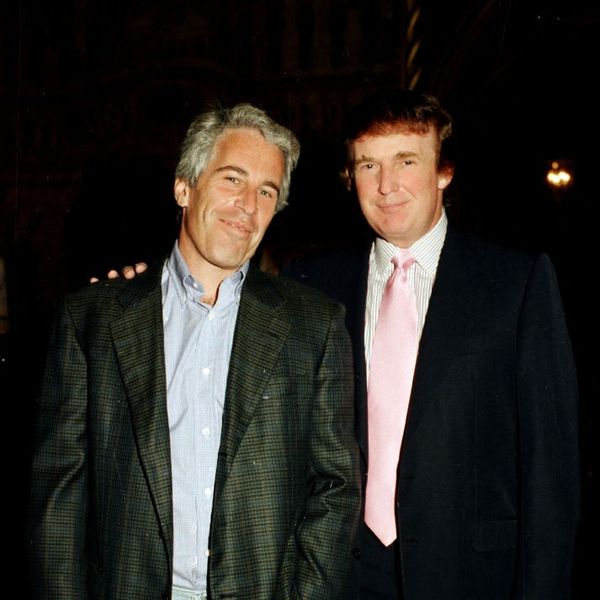Scientists to Analyze West Coast Kelp for Fukushima Radioactivity
Researcher: Our goal is 'to learn more about the distribution and transport of these materials in our world'

Called "Kelp Watch 2014," the campaign led by researchers from California State University, Long Beach (CSULB) and the Lawrence Berkeley National Laboratory will analyze how ocean currents might have carried over Fukushima radioactivity to California's kelp forest, which the researchers describe as "a highly productive and complex ecosystem and a valuable state resource."
"What I have attempted to do is to organize marine scientists and educators from up and down the coastline to collect a large amount of kelp several times a year so that we can ascertain the amount of radioactive material entering our kelp forests," explained CSULB Biology Professor Steven L. Manley, one of the two scientists that initiated the project, in a statement.
"We have two main objectives," added Kai Vetter, Berkeley Lab's Head of Applied Nuclear Physics, who initiated the project with Manley. "To learn more about the distribution and transport of these materials in our world, and to make the results and explanations available to the public."
"The best result would be that we don't see any [radioactivity]," U-T San Diego reports Manley as saying. "But if it gets into the kelp forest ecosystem, I want to know how much is there and whether it has an affect on marine life. This is one of the most important types of ecosystems on Earth."
Manley has previously studied Fukushima radioactivity on kelp in California. He and another colleague from CSULB analyzed samples from seven spots along the state's coast just after the March 2011 accident and found higher than normal levels of levels of Iodine 131, a radioisotope that dissipates quickly and that Manley said did not present a threat to human health.
_________________
An Urgent Message From Our Co-Founder
Dear Common Dreams reader, The U.S. is on a fast track to authoritarianism like nothing I've ever seen. Meanwhile, corporate news outlets are utterly capitulating to Trump, twisting their coverage to avoid drawing his ire while lining up to stuff cash in his pockets. That's why I believe that Common Dreams is doing the best and most consequential reporting that we've ever done. Our small but mighty team is a progressive reporting powerhouse, covering the news every day that the corporate media never will. Our mission has always been simple: To inform. To inspire. And to ignite change for the common good. Now here's the key piece that I want all our readers to understand: None of this would be possible without your financial support. That's not just some fundraising cliche. It's the absolute and literal truth. We don't accept corporate advertising and never will. We don't have a paywall because we don't think people should be blocked from critical news based on their ability to pay. Everything we do is funded by the donations of readers like you. Will you donate now to help power the nonprofit, independent reporting of Common Dreams? Thank you for being a vital member of our community. Together, we can keep independent journalism alive when it’s needed most. - Craig Brown, Co-founder |

Called "Kelp Watch 2014," the campaign led by researchers from California State University, Long Beach (CSULB) and the Lawrence Berkeley National Laboratory will analyze how ocean currents might have carried over Fukushima radioactivity to California's kelp forest, which the researchers describe as "a highly productive and complex ecosystem and a valuable state resource."
"What I have attempted to do is to organize marine scientists and educators from up and down the coastline to collect a large amount of kelp several times a year so that we can ascertain the amount of radioactive material entering our kelp forests," explained CSULB Biology Professor Steven L. Manley, one of the two scientists that initiated the project, in a statement.
"We have two main objectives," added Kai Vetter, Berkeley Lab's Head of Applied Nuclear Physics, who initiated the project with Manley. "To learn more about the distribution and transport of these materials in our world, and to make the results and explanations available to the public."
"The best result would be that we don't see any [radioactivity]," U-T San Diego reports Manley as saying. "But if it gets into the kelp forest ecosystem, I want to know how much is there and whether it has an affect on marine life. This is one of the most important types of ecosystems on Earth."
Manley has previously studied Fukushima radioactivity on kelp in California. He and another colleague from CSULB analyzed samples from seven spots along the state's coast just after the March 2011 accident and found higher than normal levels of levels of Iodine 131, a radioisotope that dissipates quickly and that Manley said did not present a threat to human health.
_________________

Called "Kelp Watch 2014," the campaign led by researchers from California State University, Long Beach (CSULB) and the Lawrence Berkeley National Laboratory will analyze how ocean currents might have carried over Fukushima radioactivity to California's kelp forest, which the researchers describe as "a highly productive and complex ecosystem and a valuable state resource."
"What I have attempted to do is to organize marine scientists and educators from up and down the coastline to collect a large amount of kelp several times a year so that we can ascertain the amount of radioactive material entering our kelp forests," explained CSULB Biology Professor Steven L. Manley, one of the two scientists that initiated the project, in a statement.
"We have two main objectives," added Kai Vetter, Berkeley Lab's Head of Applied Nuclear Physics, who initiated the project with Manley. "To learn more about the distribution and transport of these materials in our world, and to make the results and explanations available to the public."
"The best result would be that we don't see any [radioactivity]," U-T San Diego reports Manley as saying. "But if it gets into the kelp forest ecosystem, I want to know how much is there and whether it has an affect on marine life. This is one of the most important types of ecosystems on Earth."
Manley has previously studied Fukushima radioactivity on kelp in California. He and another colleague from CSULB analyzed samples from seven spots along the state's coast just after the March 2011 accident and found higher than normal levels of levels of Iodine 131, a radioisotope that dissipates quickly and that Manley said did not present a threat to human health.
_________________

